Interior monologues / Global
Home Truths: 15 musings on the meaning of home
The places we live in are never just bricks and mortar or glass and steel; they also represent chapters of lives and places of sanctuary on the way. We ask 15 thinkers we admire – diplomats, designers, authors and a literal enemy of the state – about what the idea of home means to them. With any luck, the collection here will offer you some insights worth dwelling on.
1.
the war reporter
Dubai
Yaroslav Trofimov on why a place can still be your home, even when you’re far away.
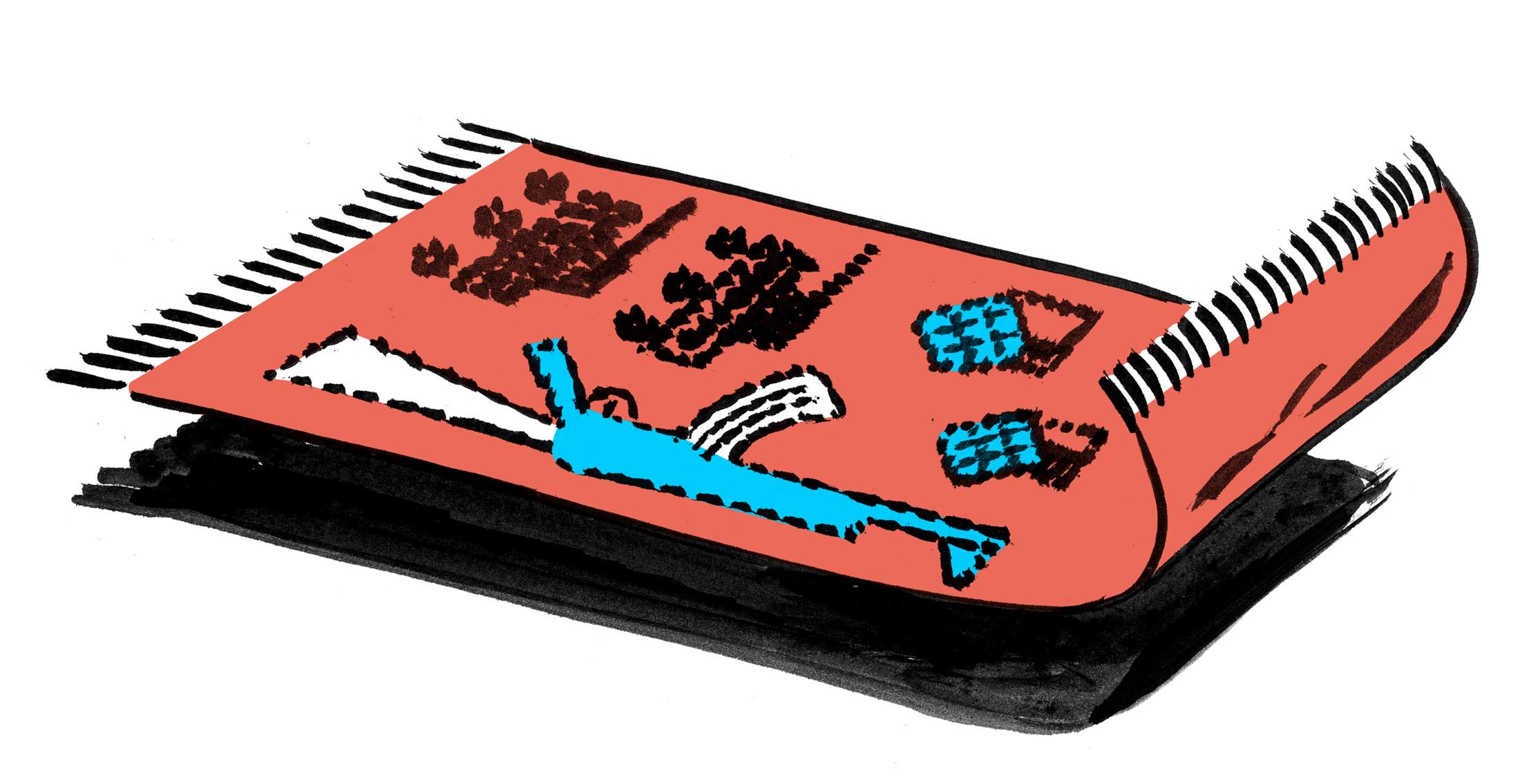
“Dubai wasn’t meant to be home when I moved here. It was meant to be a transit point, a convenient place from which to go and cover the world. But I’ve been here 10 years now and over time, places become homes. So it’s home now, and when I’m travelling, I do miss it and I do want to come back.
Coronavirus was a turning point. We were stuck here for nearly a year, so we went hiking and diving, and started to appreciate the city as more than somewhere to be between trips.
We have an apartment on a very high floor. It’s a change, as before Dubai I was living in Kabul in a house with a garden and goats and chickens: we were growing our own tomatoes and greens. Me and my colleagues all came from cities, so we were living the dream of a rural idyll. But I lived on the ninth floor in Kyiv when I was a child, so where I am now feels normal. Looking out now, I can see the port, the airport and, on a clear day, all the way to the mountains of Oman. Life is quite vertical in Dubai but there are neighbourhoods enabled for pedestrian life. I can walk underground in the summer or above ground in winter to various malls and restaurants.
I used to have a lot of things from reporting trips but my partner is an architect and designer, so now I have to negotiate where my Afghan war trinkets can and cannot hang. But in the living room we have an Afghan war carpet and a bronze of a Boko Haram fighter with a Kalashnikov that I brought from Africa. And lots of books, obviously. But we’ve also bought a lot of art together in Ukraine, mostly by contemporary Ukrainian artists.
I still feel a great deal of emotional attachment to my native Ukraine. When I was a child, we lived on a very famous street in Kyiv called Andrew’s Descent. It goes from the upper town of Kyiv down to what used to be the Jewish quarter of Podil. When I was a student in art school in Kyiv, we would go there every weekend and make some money selling our paintings. So that street is very much part of my identity.
I have thought of Ukraine differently since 2022. I left in 1990 and lived in the US and Italy for a long time. My passport is Italian, I spoke Italian and when people asked where I was from, I’d say I was an Italian of Ukrainian origin. After 2022 my answer is: I’m Ukrainian. You feel a much more visceral attachment when your country is under attack. Covering Ukraine as a journalist, I’ve taken much greater risks than I did covering Iraq, Afghanistan or the Middle East. When the city where you grew up, where every piece of geography is connected to your childhood, is under threat of being destroyed, of course you take it personally.”
Biography:
Trofimov is a journalist and chief foreign affairs correspondent at The Wall Street Journal. His latest book is the novel No Country For Love published by Abacus. As told to Andrew Mueller.
2.
the gallerist
Milan
Nina Yashar on how childhood memories can shape your taste and even your career trajectory.
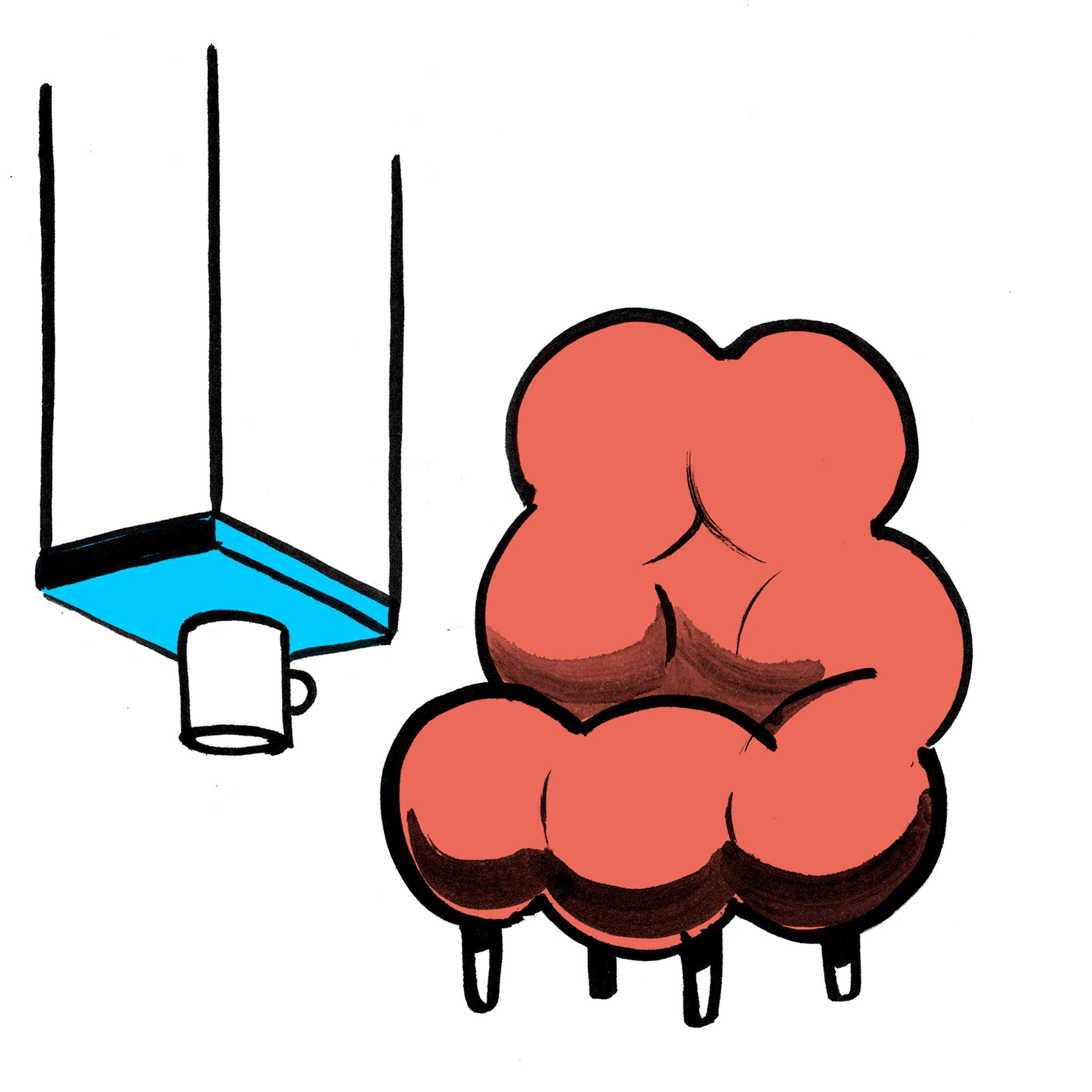
“My earliest memories of home are in Tehran, where we lived until I moved to Milan at the age of six. I have this very clear image of overlapping carpets in our home in Iran and how they would create these small, distinct environments within a larger space. These Persian rugs were everywhere in our home, hanging on the walls as well as on the floor. Today this idea of layering and creating different zones is my signature as a gallerist.
It’s not just about filling the room with beautiful objects; it’s also about creating a dialogue between the different pieces, letting them complement and challenge each other. I feel this need to create conversations between different pieces – all on top of a rug. I never create something without a carpet on the floor because it has this power to create unity and a harmony between the things.
The common denominator in my home and my spaces is my taste; it’s my point of view. I don’t like everything to be totally in harmony. I like to create a personal and unique environment where different pieces with their own stories and characteristics come together to have a conversation. I have things that I really like – and this is important to say because not everything that I have in my gallery I would buy for myself. I like unexpected pieces that aren’t positioned in a conventional way, such as a very low chair next to a high table. For example, at home I have two unique console pieces by Gio Ponti for the Parco dei Principi Hotel in Sorrento and I didn’t know where to put two ‘Due Più’ armchairs by Nanda Vigo for Acerbis – so I put them together. It’s nonsense but I like it; it’s this idea of challenging conventions.
I have pieces at home connected to travel I did 20 years ago. I was in Copenhagen and I bought these tube vases with hand-made, steam-curved wooden bases from a Danish designer from the 1950s named Peder Moos. They were originally made as a 60th birthday present for a friend of his and there are 60 little tubes in glass. Whenever I receive friends at home, I put 60 flowers in them and place them on the dining table. I also have two candelabra that are from the Victorian period – so around the 1850s – that I bought in London. I put them on the table alongside the mid-century tube vases.
I love my neighbourhood, Risorgimento, here in Milan because it also has one foot in the past, with its little old shops and bars. It’s incredible but every time I come back to Milan from abroad, I feel like I’m in secure territory. I am very attached to the city – even its provincial side.”
Biography:
Milan-based Yashar has been in the design business for more than 40 years. The collector, dealer and gallerist is founder of Nilufar Gallery. In 2015 she founded Nilufar Depot in a former silverware factory and in 2023 launched a new line of furniture called Nilufar Open Edition. As told to Ed Stocker.
3.
the magazine publisher
Charleston, South Carolina
Rebecca Wesson Darwin on how you can rediscover your roots – and turn it to your advantage.
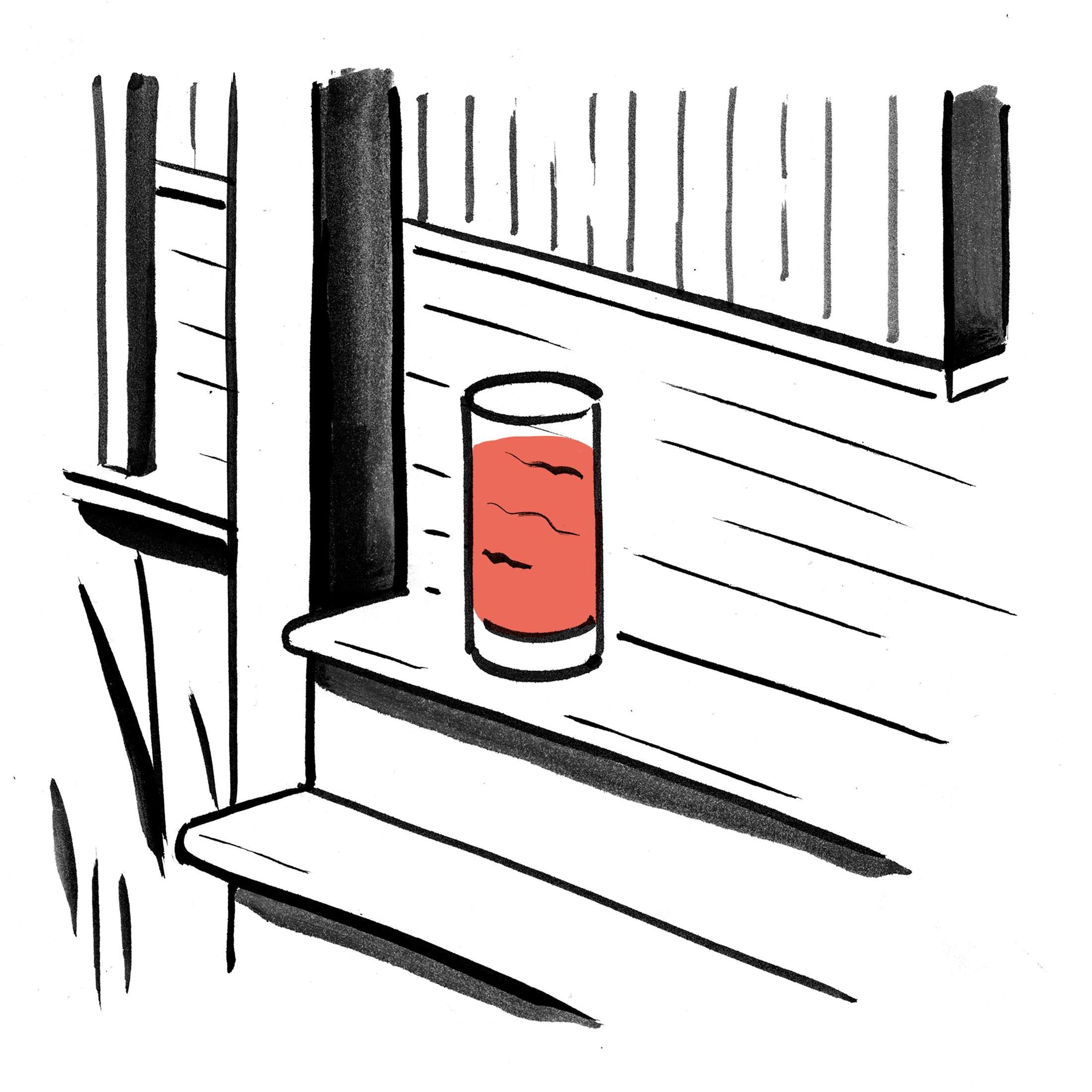
“We’ve lived in our house for more than 20 years. It was built in the 1850s and has survived hurricanes, fires and earthquakes. There’s not a straight wall left in the place and I love that about it. It’s a home with deep memories for us as a family.
This house is what’s called a ‘Charleston single’, which has ‘piazzas’ [balconied porches] on two sides of the house. Sitting on the piazza in the sunlight is a very special place for me. Porches play an important role in southern US culture because of the heat and humidity we get here. We like to open all the doors and let the breeze blow through the house. So, for me, home is the smell of jasmine because we have an entire wall of it growing in our garden outside.
I was born in South Carolina but for a long time New York was my home. I was the publisher of The New Yorker, and I loved the city: whenever I’d step out of my front door, I always felt that I could take on the world. Looking back, I think my ‘southern-ness’ – which is about having a bit of grit and a lot of grace – meant that I was able to achieve certain things in New York that I wouldn’t otherwise have been able to do, especially as a woman at that time [in the 1980s].
When my husband wanted to retrain to become a pastor in the church, we moved back to South Carolina and I began to think about how the southern states were represented elsewhere in the US. There are so many clichés about this part of the country – that we all sit around drinking sweet iced tea, for instance – whereas I wanted to celebrate the great, sophisticated things that were happening all over the region: the rise of a food scene, for example, and lots of music being made.
In 2007, I co-founded Garden & Gun magazine to celebrate the soul of the South, from its sporting life to its culture. The initial team was all southerners like me who had been working elsewhere and had come home to make this magazine. We now have readers all over the country. Many come to us, I think, because they’re longing for a sense of home that they can connect with; the South has that strong draw for a lot of people.
In Garden & Gun we write about beautiful houses all over the region, but these don’t tend to be the biggest homes. We’re especially interested in that little home in Louisiana that has been brought back to life. Or the tiny place hidden away up in the mountains that somebody has put their heart and soul into.”
Biography:
Darwin had a long career in magazines that saw her become the first female publisher of The New Yorker and marketing director of Fortune. In 2007 she co-founded the Allée Group to publish Garden & Gun, a successful publication about the contemporary life, culture and taste of the US southern states. As told to Christopher Lord.
4.
The Hollywood veteran
Napa, California
Francis Ford Coppola on family, the power of personal creativity and why he’s happy to be getting older.
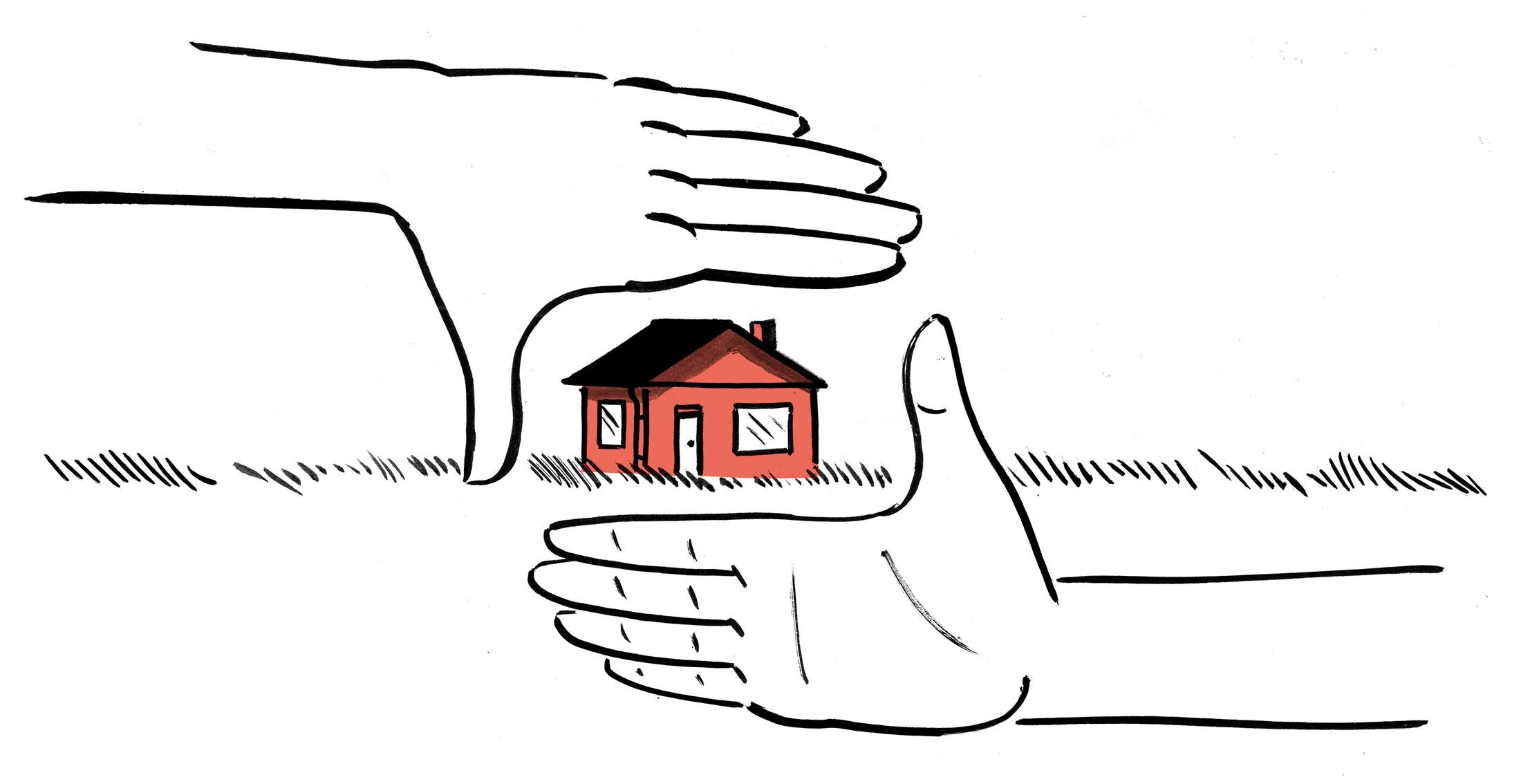
“Human beings are at their best when they play with their kids. That’s when everything gets invented. I once heard that the word ‘family’ is related to a German word that means ‘friend’. The meaning of ‘freedom’ shares its roots with ‘friend’. In Indo-European and Germanic languages, ‘family’ has another root that’s interesting in a darker sense. The Latin root, famulus, means a house slave. Our word for family, then, contains the germ of slavery.
We are in a joyous moment in time. We should talk about division and everything that’s happening to the world, and use our great talents to solve its problems, which we’re capable of doing. How many babies and children are dying every day? It’s not only unacceptable but also unnecessary. We can solve these problems beautifully with the talent that we have been given.
I’m not only a grandfather but also a great grandfather. Children are your jewels and grandchildren are dividends; my great-grandchildren are immortality itself. I’m comfortable with where I am. I’m not like Faust – I don’t want to be young but I want young people to have a beautiful world when I’m gone. And that’s what I’m trying to say in [the 2024 film] Megalopolis.
I have always had a rule while making films. Whenever I had to go away to work on something for more than 10 days, I pulled my kids out of school and brought them with me, sticking them in any school there was. My little Sophia was put in a Chinese school when she was five. She did not speak Chinese but they got the idea. The kids were around movie-making all the time. What I tell them is, ‘You’re unique. So whatever work you do, make it personal. Everyone here is a million-to-one shot and there’s no two of you.’
I made a film based on a story by John Grisham, The Rainmaker, in 1998.After that, I wanted to take 10 years off and see what I could learn if I wasn’t a professional film director. I went to different countries. I experimented a lot with acting. I recommend creative work because, in the future, we’re going to make robots do all the toil. We’re just going to play together. Megalopolis has a lot of personal detail – it’s got every movie I ever loved in it.
My father always said that he was a composer. He said, ‘Steal from the best. Poor artists borrow; great artists steal.’ We are on the shoulders of the extraordinary, talented people who came before us. The young are talented – more talented – because they are always an improvement on the previous generation: that’s human. The world has a lot of trouble and people are worried but if we could understand who we really are, there’s nothing we can’t solve. That’s a hopeful thought.”
Biography:
Born in 1939, Francis Ford Coppola is one of Hollywood’s most celebrated directors, with a career spanning seven decades and countless accolades, including five Academy Awards. His 23 feature films include milestones of cinema such as the Godfather trilogy and Apocalypse Now. His latest release is Megalopolis. As told to Tom Webb.
5.
the book maestro
Amsterdam
Irma Boom on the importance of rigour and how books speak volumes about us.
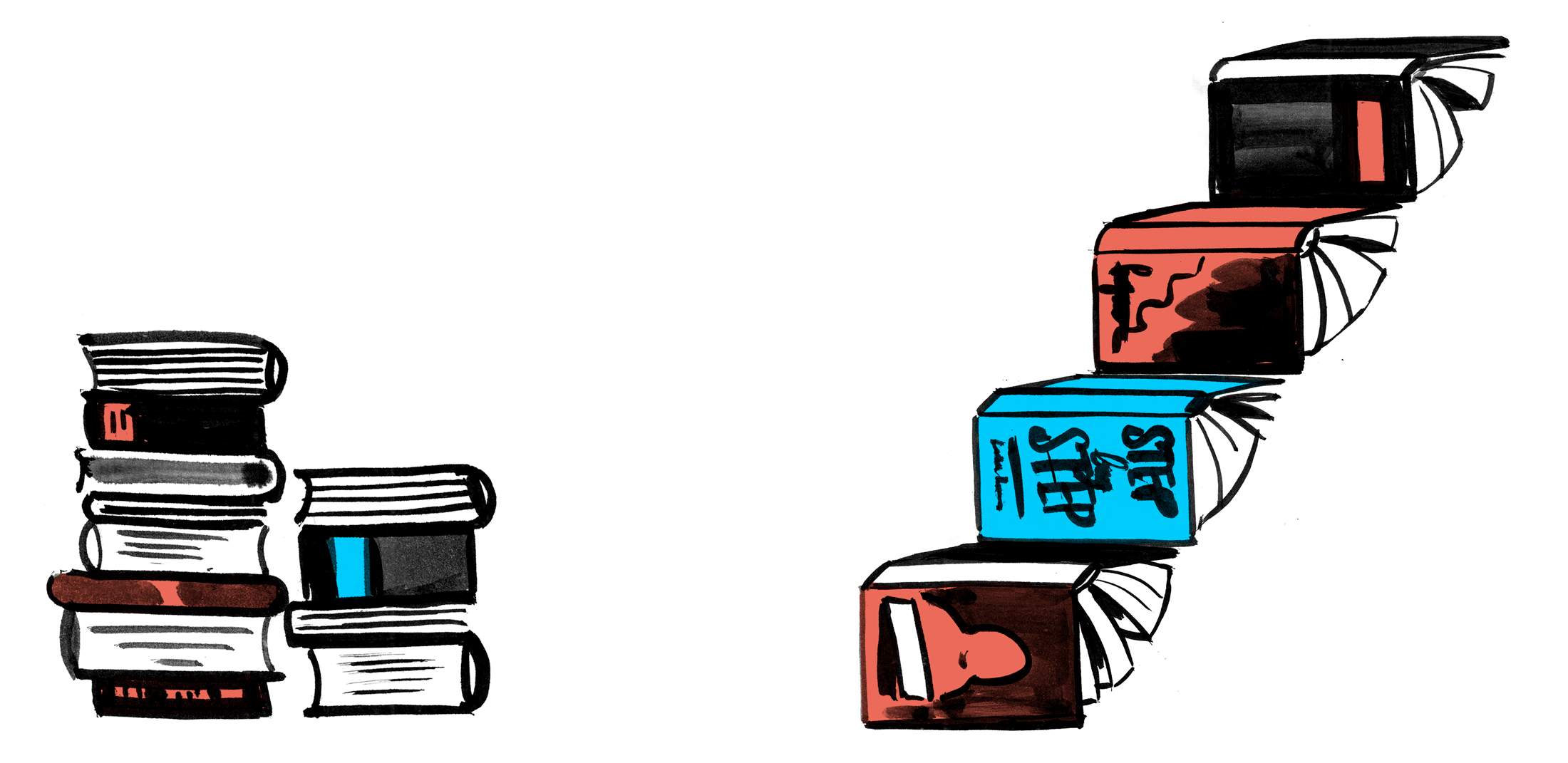
“I live in Amsterdam now but I grew up in the countryside, in the eastern part of the Netherlands. It was a big, old house – we had no central heating; it always was a very cold house but a warm family. I’m child number nine of nine. My memories are of long tables with lots of people: not only my brothers and sisters and my parents but also lots of friends – because if you can cook for nine children, you can cook for 12. There were always people who wanted to come to our house because it was very friendly. In Dutch the word is gezellig.
My mother was always cooking – fresh vegetables for the whole family and, of course, apple pie. It was a very organised family life – if you have so many children, you have to be – so my mother ruled as a sort of general. Everything was on time: 08.00 was breakfast, midday was lunch and 18.00 for dinner. It was all very strict but that was good; it gave structure to our life.
I now live in the south of Amsterdam. It’s a very high house with five storeys and steep stairs. The office is in the same house, on the ground floor. So I only have to go downstairs to get to work, which is super convenient. At the beginning I thought, ‘Oh, working and living in the same building is terrible,’ but now I really love it.
I trained as a painter and in the last year of art school, I found out that I wasn’t so good; at least, that’s what I thought. I had this romantic idea of being alone in my studio and painting. But in the end, it was not my thing at all. So I checked out other disciplines. Every week, one of my teachers showed us books and how you can create a new world with type and that you work with a ‘commissioner’. That was exactly what I was looking for: to collaborate on projects. Making books is a collaborative effort: you work with an author, artists, photographers, architects, printers and binders.
I love seeing [US artist] Sheila Hicks’s book in people’s homes. It always makes me a smile. Making books is a big responsibility. It’s very time-consuming and you use a lot of resources – water, wood, ink and people’s labour – so I try to do my best.
If you go to younger peoples’ houses, they often don’t have books anymore, which I think is sad as books are an integral part of our culture and knowledge. It’s important to have books in the house, I have them on every floor. They’re my friends. But if I had to save one thing in my home, it would be [my] photos and my ancient Roman wedding rings. My partner was very ill and we got married on the last day of his life. One of our friends brought us these Roman rings that they got at an auction, which I now wear. They’ve really changed my life, because I now think differently about time. It’s beautiful to have something so old on my hands; I’m connected to eternity, which gives a good feeling.”
Biography:
Dutch graphic designer Boom is a specialist in books and has contributed to, commissioned, made and designed more than 300 titles. As told to Sonia Zhuravlyova.
6.
the SERIAL entrpreneur
Paris
Ramdane Touhani on how you can make a home anywhere and with anything, as long as it contains a good bed.
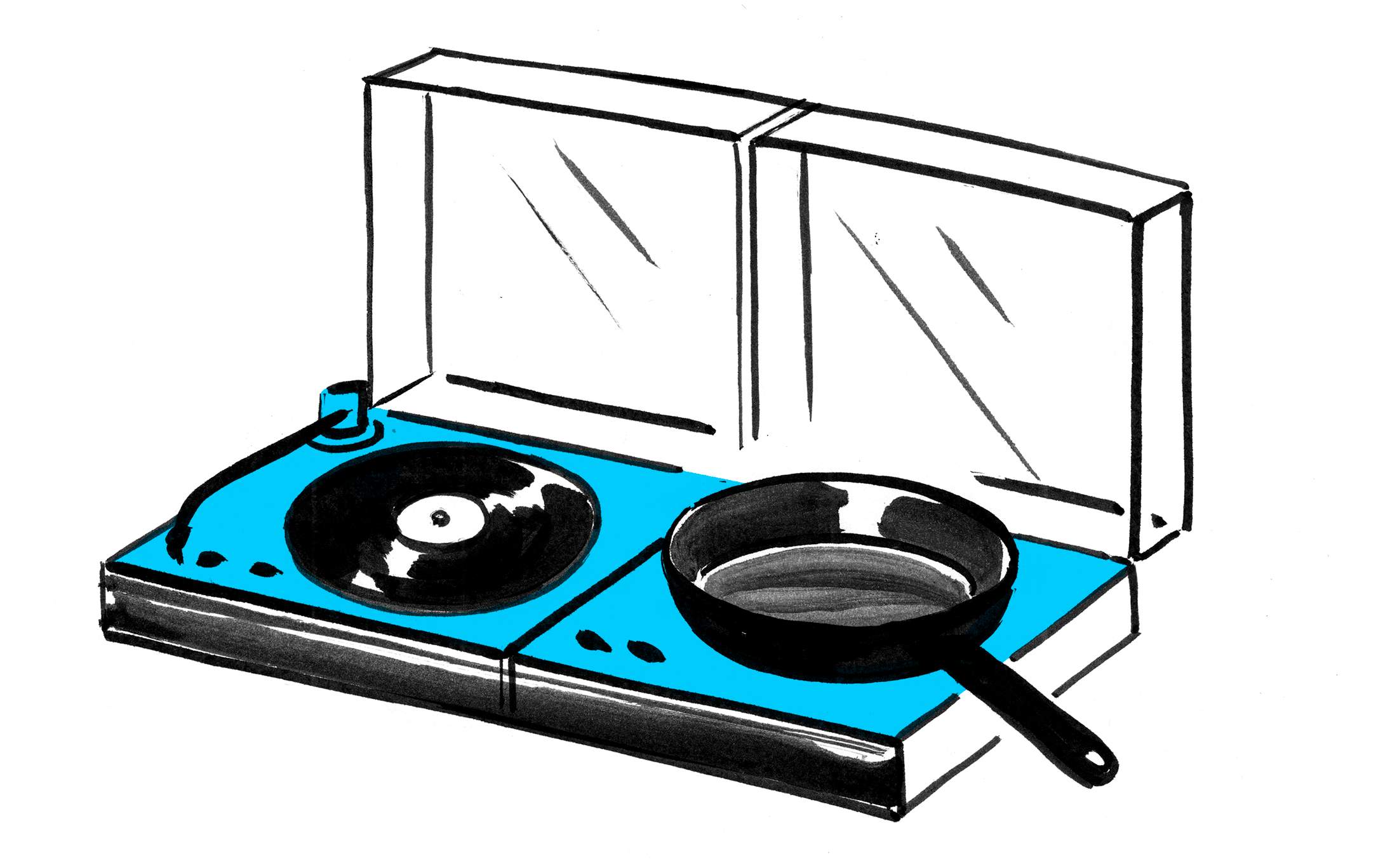
“I grew up amid the apple trees on the farm where my father worked. We were living in a very poor place and our home then wasn’t really meant to be a house. It was in the middle of the field, next to a castle – well, a little château, where my mother did the cleaning – deep in the countryside of Tarn-et-Garonne, southwest France. I’m not bourgeois but my life is very different from that of my parents. Honestly speaking, my wife and I live in another world.
I moved into my first flat when I was 17 but I don’t remember what I bought first – I didn’t care about houses for a long time. I was always out. I just needed a good bed and maybe a table. I wasn’t concerned about the interiors but the first item I did care about was a double Technics sl-1200 turntable and a pair of speakers – that was in the mid-1990s.
In my life I’ve lived in 17 houses, from India to the US to Japan to Morocco. Really, home for me is where my wife and children live; it could be anywhere in the world. I’m not a materialistic guy. Even if I have a beautiful home in Paris with a garden, houses are still more of a logistical thing to me. Yes, it has to be beautiful first but the most important things are really the bed and the kitchen. What touches me physically matters too: mattress, bed, sheets, towels. I know people find art very important; we have art but it’s not an obsession. I try to use my house like a tool.
A new thing that’s important for my wife is the pool. We have a pool in Paris; not everyone has that. But I would rather have a very tiny home that’s comfortable than a very big one that’s not.
I don’t like too many people in my house. I have a guest room for friends but having them stay for two or three days is enough. It’s too intrusive. When I have a guest at home, they tend to always talk to me – I like to be by myself. Tonight, for instance, I have dinner with a friend at ours and, even though I’ll enjoy it, I’m already hoping that it’s not going to go on too late.
Designing my home was nothing like my work in retail: they’re totally different ways to do things. The light is different. Everything is different. The only thing in common is the fact that you have to design it but a store is all about efficiency: it’s not about the pleasure of staying somewhere. If people want to stay in a shop but spend nothing, that’s problematic.
Home is where you want to be at home. Sometimes that’s Tokyo but I can feel at home anywhere in the world. I don’t [always] like France but I live here because my wife wants to be here near her mother. But one day our home could be somewhere else.”
Biography:
Touhami is a serial entrepreneur. His business triumphs include revamping the fragrance brand Officine Universelle Buly 1803 and selling it to lvmh. He recently opened the Hotel Drei Berge in the Swiss Alps and a hiking supply shop in Paris. As told to Simon Bouvier.
7.
the filmmaker
Hong Kong
Felix Chong on how the violence surrounding his childhood homes went on to inspire an acclaimed movie career.

“My first home in Hong Kong was in a legendary building in North Point called Kiu Kwan Mansion. The colonial government labelled it a communist stronghold and when I was five or six I would often see police raids. The most memorable was when they lined up a group of suspected communists and made them kneel in front of this huge steel wall made out of mailboxes. When someone did something the police didn’t like, they’d get kicked in the back of their head and their face would smash against the metal. The sounds, the smells, the blood: that stuck with me all my life.
We shared that apartment with two other families; 10 people squeezed into a tiny space. By the time I was 17, my dad had found success selling soda and popcorn in cinemas, so we moved into our own apartment in Fortress Hill. I had to help in the shops every weekend and during holidays. It was so hot that I’d sneak to the air-conditioned cinema to cool down: that meant watching the same movie five times a day. A big hit could run for two months, so I started to learn about editing, camera placement and designing my kung fu choreography. I left my degree in industrial engineering after the first year and enrolled in the only film school that existed back then.
Hong Kong directors shoot on the street a lot because only real people and traffic can reflect this city. It’s hard, though, because the old city is disappearing. I now have to spend a lot on cgi. Each time a building is going to be pulled down it’s a kind of tradition for filmmakers to think of a scene that can be captured there. Hong Kong people are always charging towards the future, but we also want to stay where we are. It’s quite contradictory.
I now live in a historical building in Happy Valley and have fond memories of the old hsbc building in Central. My father would let me sit on the stone lions outside. I loved all of the buildings on that street but only the Bank of China still stands. I moved out of my parents’ home in Fortress Hill with my wife when we got married. I was planning to go to China to write TV scripts because it made a lot of money but when Infernal Affairs became a hit and my wife was pregnant, we decided to stay.
I like to have a silent space at home to work in but every home we’ve lived in has been next to a school. Only in our last one in Happy Valley was that deliberate. It’s next to my daughters’ old school because I wanted them to be able to walk there. I walked to my school as a child and I saw a lot of things: drug deals, violence, Triad members chopping each other up on the street. Hong Kong in the 1970s was a very different place.”
Biography:
Chong is an award-winning Hong Kong screenwriter, film director and actor who is best known for depicting his hometown in acclaimed crime thrillers including Infernal Affairs, Overheard and The Goldfinger. As told to James Chambers.
8.
the historian
London
Alex von Tunzelmann on why dwellings are improved by pets and even big cities have nice neighbours.

“Having tried several compass points, I’ve settled in east London, in Bethnal Green. It’s part of the old East End. It has a huge amount of historic character but has also had waves of interesting migration and change, and now gentrification, another wave of change on top of the others.
I’m always struck by the extraordinary pace of it. In the 1950s it was a very Jewish area, more recently a Bengali one. A while ago I saw a retrospective of Don McCullin’s photography at the Tate. Bethnal Green in the 1970s and 1980s looked like a war zone and now flats can cost a million quid. As a historian, it’s inspiring: you see the layers like sediment that has built up – and those layers don’t go entirely, they just accrete on top of each other.
We live with two cats, both named after obscure characters in 1980s movies – Bixby Snyder and Martha Dumptruck. You can have 10 points if you can name either movie. I grew up with parents who were quite resistant to pets, so this is my first venture and now I would find a house without pets a bit empty. It is sort of magical, having two miniature tigers wandering around the place. And it makes you relate to your home differently because you’re sharing it voluntarily.
There is a lot of art, to the point where it is now one in, one out. It’s probably all 20th and 21st century but it’s also very eclectic. I have a great love for Cuban film posters from the mid-20th century – they’re graphically very beautiful. I also have a poster from an exhibition of the work of Berthold Lubetkin, the architect. My mother was his lodger in Bristol, and there are buildings near us that he was involved in designing, so there is deeper significance than just liking it as a piece of art.
My husband grew up in northern Scotland and I grew up mostly in Brighton. Though we’re fond of those places, I don’t think we commemorate them. It’s probably significant that we’ve chosen to live very much in a city. People think of London as cold and impersonal but if you make the effort, it’s absolutely possible to get to know the neighbours. I love having people over but I like a bit of notice.
The biggest feature is books. The thing which drew us to our flat was the fact that it was double-height, so my fantasies of a double-height bookcase with the ladder have come to fruition. We have our own books in a cabinet which you can’t see through, so as to make our mothers sufficiently happy but without creating too much of a wall of [personal] achievement. I wouldn’t want people thinking they had to pay homage.”
Biography:
Von Tunzelmann is a historian, screenwriter and author. Her latest book is Fallen Idols, a study of the theory and practice of statue-toppling. She lives in London. As told to Andrew Mueller.
9.
the career diplomat
Helsinki
Petri Tuomi-Nikula on how a diplomat’s home represents more than just their country.

“When I think now of my earliest childhood memories, I realise that they were a precursor to what life had in store for me. My childhood home was by a river in Ostrobothnia, western Finland. Less than a 100 metres from my bedroom window, rapids roared: that sound is my strongest memory from then. Long ago, ships would sail down that river to the Gulf of Bothnia and from there to the world’s ocean. Another memory – also a sound – is the whistle of train horns; those thoughts of a world far away that I wanted to explore.
My parents, both of whom were teachers, pushed me toward the rest of the world. They encouraged me to study languages and to travel. My father was a Francophone; my mother spoke German. During the summer holidays there were always friends from abroad at our dining table: it certainly influenced my career choice.
A home is not just a physical place to live in; it’s a state of mind. For me, it’s the Finnish language, my mother tongue. It’s the language that allows me to express myself most clearly but also the language that best allows to me understand others. I’ve spent a large part of my life living abroad and speak at least five languages but it is my mother tongue that provides me a sanctuary and renewal through reading and listening.
There’s a proverb that feels a bit old-fashioned these days but that has great wisdom in it for us diplomats: ‘A man builds a house, a woman makes it a home.’ It’s about the role of a spouse – man or woman – in creating a cosy, personal and unique home. Of course, a diplomat’s home is more than just their home. It’s also a state residence and is expected to reflect the diplomat’s home country and culture. This is especially true for the ambassador. However, it doesn’t mean that it should look like a showroom; it should look and feel authentic. It does this when you see the inhabitants feeling comfortable in it, surrounded by familiar things and objects, regardless of where those items originated. Diplomats’ homes are often furnished with objects and furniture from the countries where the family has lived, rather than items brought from home. In my case, Italy is strongly present but there are also items from my first posting more than 40 years ago in Germany.
For a diplomat, home is where you host, which is an important part of the job. My spouse and I have always invited people with different political views to gather around the same table. The best and most constructive conversations happen between people with different backgrounds and opinions. There’s less to talk about with those who share views. I guess you could say that for a diplomat, home is more than just a home.
Finally, home is nothing without music. After long dinners with colleagues from various countries, I find myself retreating to it. Music is a language of its own. My favourite is soft jazz, slow and classical. That’s the kind I fall asleep to.”
Biography:
Tuomi-Nikula is a retired senior diplomat who was Finland’s ambassador to Rome and Budapest. His recent book Erilaista diplomatiaa (A Different Kind of Diplomacy) is one of Finland’s best-selling non-fiction books of the autumn. As told to Petri Burtsoff.
10.
the restaurateur
Paris
Pierre Touitou on how a workplace can become a second home – and keeping things tasteful while you’re away.

“It might sound weird coming from a chef but for many years, I only had two pots and pans at home. Most days, I’d eat at the restaurant [I worked at] and on my days off, I’d try new places. It wasn’t until coronavirus that I started properly cooking at home. There’s a lot of value in it though: anything I put on my menu has to be good enough for you to want to eat a full plate of it, just like when you’re cooking for yourself.
I’ve lived in a very small Parisian studio for the past 11 years, so hosting at home hasn’t really been an option. It’s a place to sleep and rest. That’s why many friends haven’t seen my apartment but they’ve all been to my restaurant. My restaurant is my second home; it’s where I spend the majority of my time and keep many familiar items – my favourite books. My job is about more than food; it’s about hosting people.
I recently bought a bigger apartment. It’s very minimal for now but maybe I’ll have more friends over when I’m more settled in. If there were a fire, what would I grab? My most prized possession is probably a pair of leather boots. I’ve been wearing them for a decade; they are so tough to break in but once they’re worn in, they become incredibly comfortable. Aside from that, I don’t own much: books and some clothes.
If home weren’t Paris, it would be Japan. I’m not into manga or anything but the general mindset – particularly the attention to detail – has resonated with me ever since I first visited as a child. My parents [apc founder Jean Touitou and art director Agnès Chemetoff] spent a lot of time there for work and would always bring me back things like crayons, backpacks and toys.
My girlfriend is French-Japanese and we go to Japan every May. I wish I had more time to travel but I also like the familiarity of revisiting places I know. Every New Year’s Eve, I go to our family house in Normandy. I have this flannel shirt there: as soon as I wear it, it feels like I’ve arrived home. It’s funny how you have different rituals in different places. Italy, where I go every summer, is the only place on Earth where I have breakfast. I look forward to it.
When people ask what the best meal I ever had was, I say it’s not just about the food but the where, when and who – the elements that make it feel right. That makes me think back to when I was working in a tiny village in Uruguay. One day we drove to buy food and guess what the three things I bought were? Société roquefort, a bottle of Evian and a baguette. I didn’t have much French food growing up but when you’re on the other side of the world, the food from your home takes on a new significance.
Biography:
Touitou is a French restaurateur and the chef-patron of the unmissably good 19 Saint Roch restaurant in Paris’s 1st arrondissement. As told to Annick Weber.
11.
the architect
Berlin & Lomé, Togo
Jeanne Autran-Edorh on the importance of bringing a little bit of home with you wherever you may go.

“I grew up in the south of France, close to Marseille. It’s a beautiful region but what was most formative for me was the fact that I grew up between two cultures. My dad is from Togo and my mother is French. They separated when I was young, so I was always in between two households and these two different traditions. For me this was really rich because it allowed me to feel at home in different contexts, making me adaptable and flexible.
I spent a lot of time in my mother’s house when I was young, where we also lived with my grandmother. It was an old farmhouse that was always in a state of transformation because my mother was an artist. She worked with textiles initially, making decor and theatre costumes. Our place was always filled with material and art, and the sound of home was a sewing machine – even today it’s a noise that I find really relaxing because I would fall asleep with it as a child. When I was a teenager, my mother changed disciplines and became a ceramicist. She kept a studio at home which meant that there was always a creative space to retreat to. For me, even now, an atelier always goes with a home.
Today I’m based in Berlin but it’s not the only place I call home. I’m often in Lomé, Togo’s capital, and in France too. I share time between these three locations but the thing that unites these environments are crafts and materials inspired by my childhood. I furnish my spaces with objects and fabrics – there’s always texture and colour. This provides me with inspiration.
If I’m not at home in a big, blank and neutral place, I will always try to add things to make it feel like home and inspire me. As such, when I travel I always have textiles in my luggage, which I will place on things like the hotel couch to make it feel like part of my universe. I’m drawn to African woven fabrics such as kente, a type of silk and cotton fabric, that can serve as a blanket on the bed or couch – or even as a towel. I like the fact that it’s multifunctional.
As an architect, if I’m designing a home for someone else, I work really hard to understand their character, as well as their taste and what inspires them. I also like to ask what their ideal day looks like. This is different to asking what your daily routine is. I’m more interested in what your dream is. In an ideal world, how would you want to start your day? Where would you want to spend your time? What would you want to look at?
By answering these questions you can create a space that’s inspiring beyond your everyday life. It’s nice to think about the role that your home can play in creating your future.”
Biography:
Berlin-based Autran-Edorh is the co-founder of Studio Neida, a multi-disciplinary design practice, working between Europe and West Africa. As told to Nic Monisse.
12.
the homemaker
Helsinki
Johanna Gullichsen on how a designer’s home doesn’t have to be perfect. It’s sometimes a space to experiment.
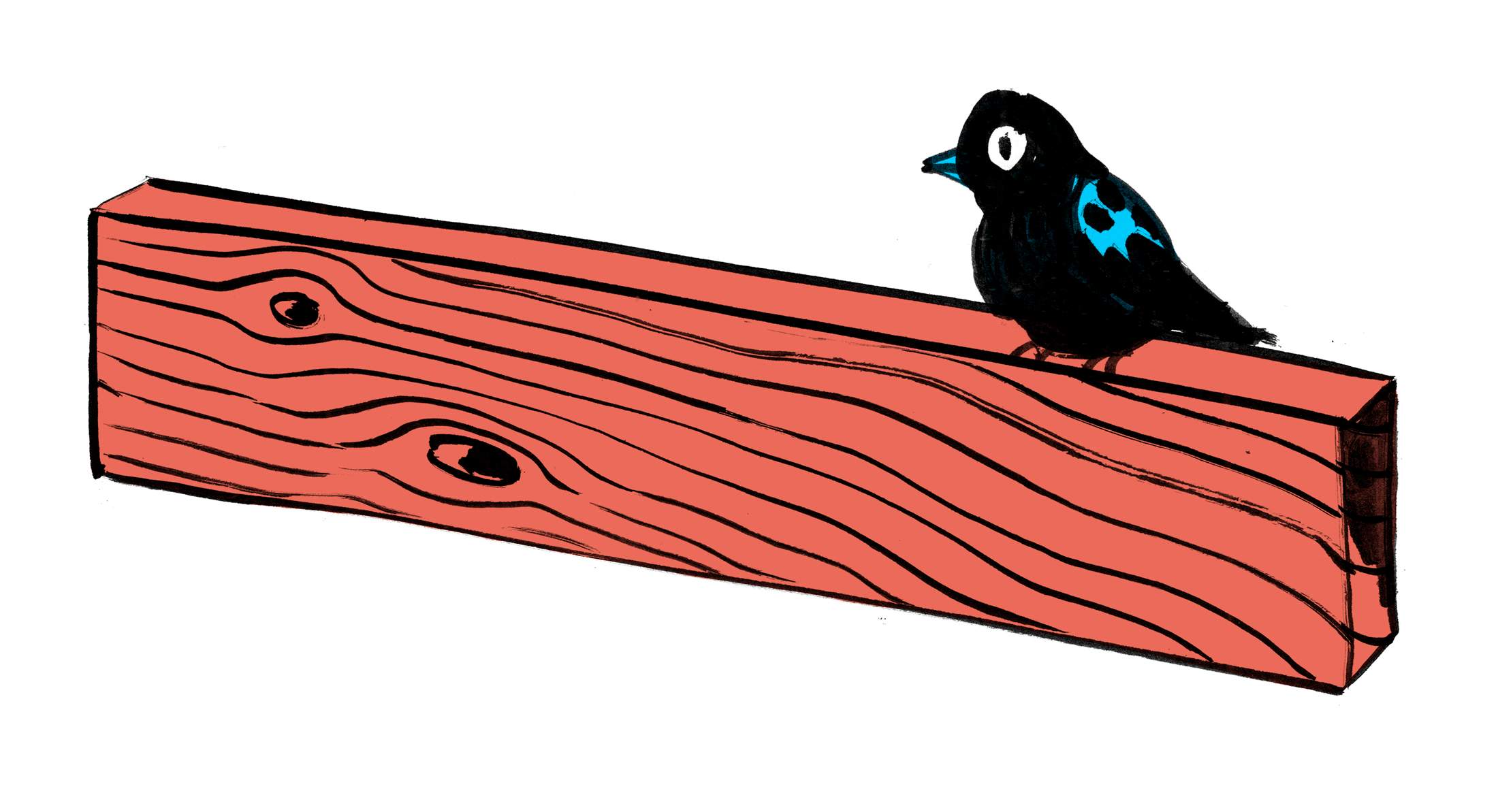
“As a designer of home textiles, I see a lot of homes. In Finland, where I live, the climate is cold and people spend a lot of time indoors. This means that people put considerable effort into making their homes feel cosy and nice.
But what makes for a good home? Many people follow trends and commission interior architects to design a perfect home for them. But at the end of the day it is about adding that personal touch that can only come from you. People need to find their own sense of style instead of letting someone else impose stylistic choices on them. If I think about my own home in Helsinki, I have a large collection of books and design items that I have accumulated over the years. They have travelled with me from home to home, and without them my home would feel empty. That said, they are still just things; they’re not holy to me. If I had to grab just one thing to salvage from my home, it would probably be my beloved woollen Ruskovilla sweater.
I think about things that remind me of home when I travel; it would probably be the smell and taste of rye bread, which is something quintessentially Finnish. Travelling a lot makes me sometimes think of why I don’t feel at home in hotels. I really don’t like them. There’s something impersonal and I feel constrained in an environment that I cannot shape.
I’ve been exposed to great design ever since I was a child. My grandmother, Maire Gullichsen, was a close friend of Alvar and Aino Aalto, and lived in Villa Mairea, one of Aalto’s most acclaimed buildings. I spent a lot of time there as a child, surrounded by wonderful design and architecture. Of course, as a child you don’t think about those things but with hindsight, I admit that it probably had something to do with the fact that I became a designer myself. My grandmother founded the Finnish furniture company Artek together with the Aaltos, and I grew up around Aalto furniture – both prototypes and the classics. In fact, one of the earliest things I remember from my childhood is sleeping in a wooden children’s bed that either Aino or Alvar had designed. That’s where my love of natural materials also comes from. As a child, I was barefoot a lot, and I still remember the tactility of the wooden floor and the rugs I walked on, as well as the scent of wood. If I look at my home now, there are a lot of surfaces and textures that are pleasant to touch, such as the indigo batik from Japan and the sisal rug that covers the floors – and, of course, my own woven textiles.
People often believe that designers’ homes look like showrooms. But just like great chefs don’t always cook Michelin-star dinners at home, a designer’s home can at times look chaotic and disorderly. We are creatives and the freedom, which is an essential part of the creative process, cannot and should not be constrained. That’s what my home means to me: freedom.”
Biography:
Gullichsen is the founder of the eponymous Finnish design brand known for its woven home textiles and fashion accessories. As told to Petri Burtsoff.
13.
the UN housing chief
Nairobi
Anacláudia Rossbach on the housing deficit and how crucial it is to offer a sense of home to everyone.
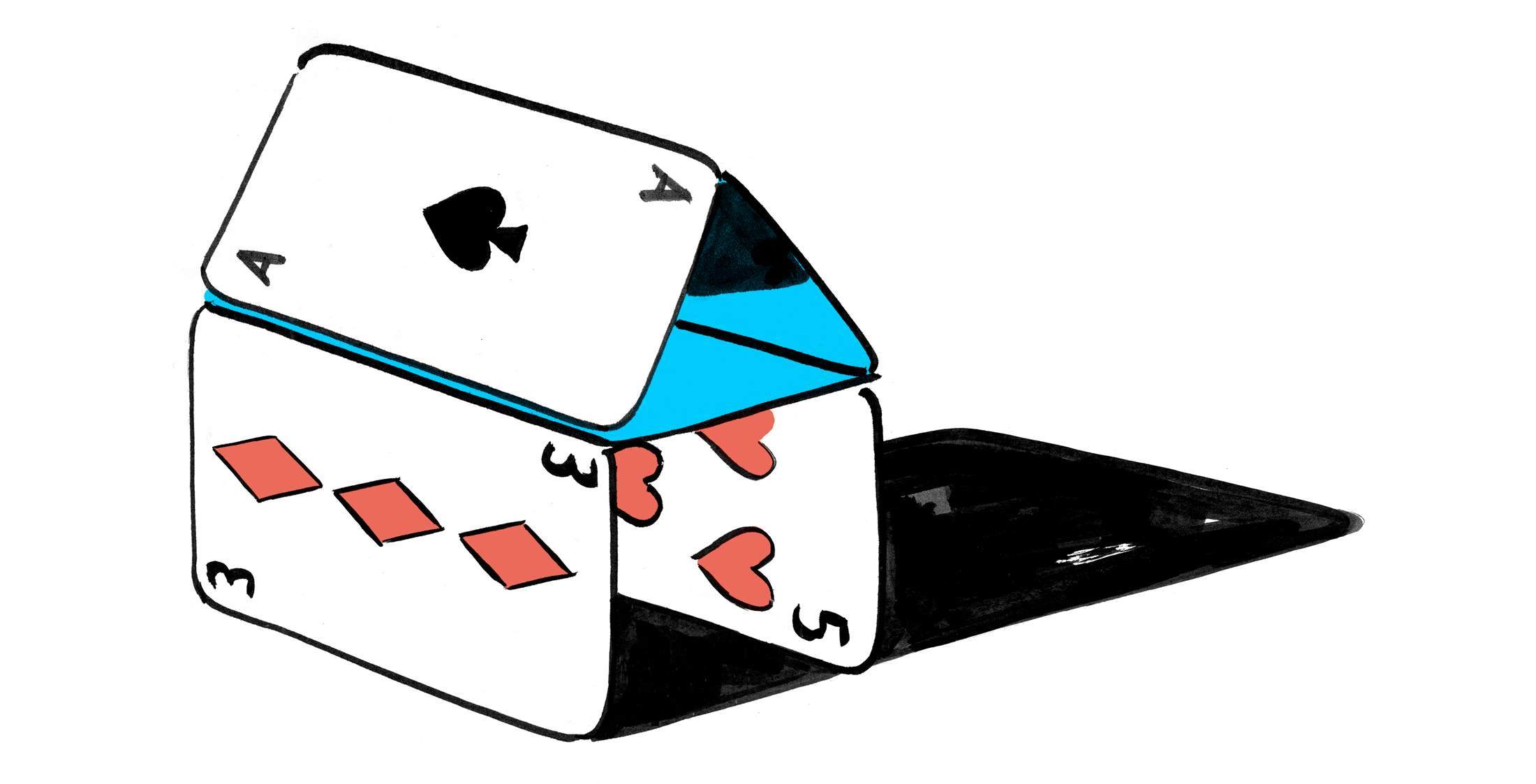
“Even though I move cities every few years, at any moment I could return home – I have the key to my place in São Paulo. When I think of my home, I think of sitting down with my children and dear friends on my brown sofa. It’s so comfortable and it reclines so you can stretch your feet out. I grew up in the Pinheiros neighbourhood. Our apartment building was on a dead-end street. I knew the neighbours and we played in the street, which is very rare in São Paulo. The city was safer then too. We went back and forth to each other’s houses. Having that sense of community in a big city like São Paulo was important to me.
My father was in the army and when I was eight years old we moved to a town without much infrastructure on the border of Brazil and Paraguay. There were indigenous tribes and rural people: a very different experience from São Paulo. It was remote but also on the border of another country. We would cross the river by boat almost every day to go into Paraguay.
One time there was an enormous flood that nearly wiped out the whole town. We had to flee our house. We came back with a boat to reach the second floor and gather whatever we had stockpiled upstairs. We lived in a temporary house for a while. I watched other families go through the resettlement process too. The experience created a sensation of vulnerability, that at any moment your house could be destroyed. And ours was a solid one – brick, two storeys – compared to the others in town.
Whether working with my ngo in São Paulo, or at the World Bank where I advised the Brazilian government, I visited lots of communities where we designed and built social housing. In Osasco, on the outskirts of São Paulo, I got to know several families who moved from wooden shacks to proper flats. I’ve followed their lives for 20 years and seen how this transition changed their lives, especially the children. Now they go to school, even university, and earn better wages. When they were living in shacks, they didn’t want to go to school because they were bullied for living in a slum. Plus, they had no place to do their homework.
Making their lives better was not only about the house. We also made sure that these families have access to a cultural centre, recreation facilities, green space and better connectivity – it’s important to have a robust home but also to enjoy the city and public spaces. These experiences inform how I think about the global housing crisis. I have two children and I couldn’t imagine them growing up without a house. Being a mother creates a feeling of urgency. We need to act now.”
Biography:
São Paulo-born, Nairobi-based Rossbach is an economist and the executive director of UN-Habitat. She took office in August 2024. As told to Gregory Scruggs.
14.
the chef
Mexico City
Elena Reygadas on the importance of dining tables and how their significance can span generations.

“In my childhood, just as it does today, family life centred around the dining table. As a child, my family had two: one informal in the kitchen where we would laugh, chat and argue, and another for larger family gatherings, where, once again, we would laugh, chat and argue. Dinners were always prolonged at home; it’s where we reunited after long days. At my restaurant, Rosetta [in Mexico City’s Colonia Roma], I still enjoy watching the tables who stay late as they chat over their food and treat the place like their own.
At home I have two daughters who are used to the fact that, as a chef, I can’t always be home for dinner. The table, however, is where we congregate. Yesterday it was over a quick avocado salad. Despite my daughters being teenagers, challenging me and being occasionally, let’s say, provocative, these moments are always special. These table scenes are the reason I became a chef.
Years back, when I lived in London, I missed gatherings with family: I noticed the tastes and smells I missed, too. I craved tamales and pan dulce – two things always painfully missing from Mexican menus there. However, I loved visiting pubs whose warmth, carpets and chatter always remind me of home. On the colder evenings I would think of chile relleno – poblano chilli stuffed with cheese and black beans. Hearty meals like this evoke so much more than something light or intricate. You’ll never see a tasting menu at Rosetta: no one feels at ease or warm with them.
While tables and people made me a chef, I am sure of the exact reason I became a baker. I remember taking a long walk every afternoon with my cousins to a bakery in Velasco, the town just outside of Mexico City where I grew up. An old man and his two sons would be kneading dough and pulling fresh loaves from the wood oven. This region is a lot cooler than the rest of Mexico; I recall the bread’s warmth as we would walk back for dinner. Naturally, a taste would prove irresistible. Even with the words of warning from my mother repeating in my head – the bread was for everyone to share – I could never resist tearing off some small pieces to fuel my journey home. When we got back, some of the bread that we had fetched would be dipped in hot chocolate or atole at teatime, while the rest would sit at the centre of the table for dinner. It always pleased me to see my family enjoying the bread that I had brought them.
Recently, I went back to Velasco and back to that bakery. The old man was no longer there but his son was working the wood oven. Thirty-five years on, we both remembered one another and the bread has remained unchanged. I took a few loaves for the journey back.”
Biography:
Reygadas is the chef-patron of Rosetta and Panadería Rosetta in Mexico City. She also runs the sought-after Lardo, Café Nin and Bella Aurora restaurants. As told to Jack Simpson.
15.
the enemy of the state
London via Harare
Georgina Godwin on how being disowned by your country can trigger a different sense of belonging.
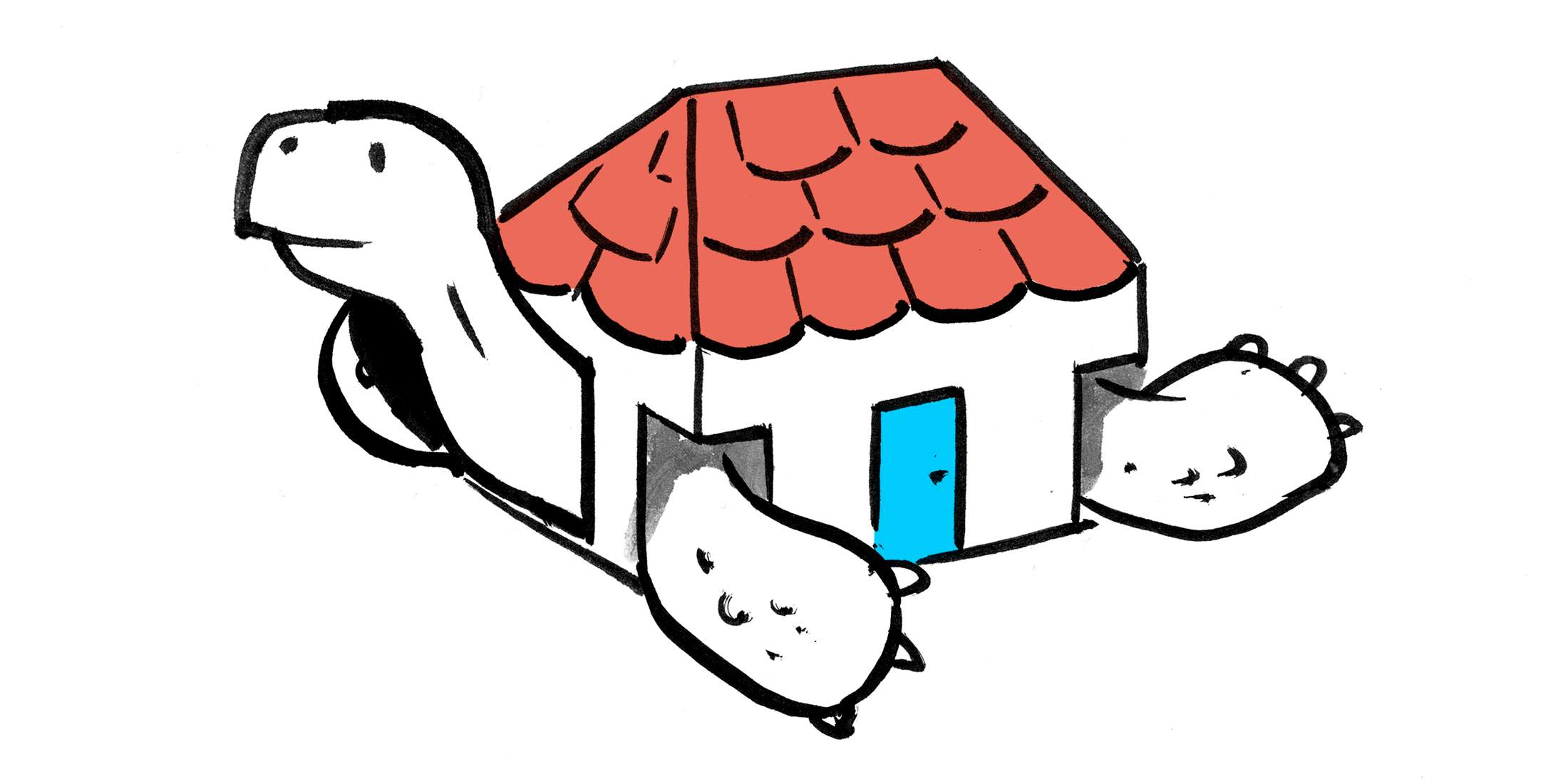
“Zimbabwe has always been home to me and remained so, even though I’m not allowed back. In my thirties I started an independent radio station in Harare and now I am an enemy of the state. I have this complete visceral love for the place and a total antipathy for the politics and the way that it’s run. My family lost everything when we were forced to leave. I arrived in London with nothing and started again. In the UK, I still don’t feel British. I do, however, feel like a Londoner, which I think is something completely different. I really have no idea where I belong.
Home comes back to people. Of course, you can surround yourself with things. I might say I’m at home when I’m surrounded by my books but once you’ve lost material things, you realise that they don’t matter. I’ve managed to hold on to a couple of old family antiques and it’s lovely to have things but if I didn’t, it would be OK. Home to me is like being a tortoise with its shell – I take it with me.
My earliest memories are of wearing no shoes a lot of the time. It’s warm in Zimbabwe, though we have torrential rain: it’s extreme weather, ich is wonderful. I grew up on an estate that grew wattle trees and tea and coffee. We were right up in the Chimanimani mountains between Mozambique and Zimbabwe. There were lots of waterfalls, so those sounds are evocative. Later, I lived in cities but cities in the 1980s that still felt like they were stuck in the 1950s. I’ve worked in radio since I was 16 years old and so in the background there’s always kind of different jingles going on and time checks and things for the various stations that I’ve worked for throughout my life.
In a fire I’d grab a book called When Hitler Stole Pink Rabbit by Judith Kerr, a story about a child needing to move home set against the backdrop of the Holocaust. She was born in Berlin and her family moved when the war came. When I was growing up, I had no idea that my father’s family were killed in the Holocaust. My father completely reinvented himself. The book had been given and inscribed to my older sister by some relatives. My sister, in turn, was killed during the Rhodesian war. It was the one book I took from Zimbabwe with me. Years later, I interviewed Judith Kerr and I took it to her house. I told her the story and she wrote in my copy. Now this book has my sister’s name in it and Judith’s name in it. Honestly, when I think about it, it makes me want to cry.
My brother has just written a memoir. It’s called Exit Wounds and it examines the thought of home. Like me, he grew up in Zimbabwe, came to the UK but now lives in America: he really kind of pulls apart what it means to come from somewhere. He uses the allegory, if that’s the right word, of migratory birds and talks about how the swallows return in spring. It’s just a very beautiful way of examining and teasing apart where we really belong. And I think the answer is that we don’t really know.”
Biography:
Zimbabwe-born Godwin is a London-based broadcaster and fellow of the Royal Society of Literature who was exiled from her home country. She hosts Monocle Radio’s Meet the Writers podcast. As told to Carlota Rebelo.


